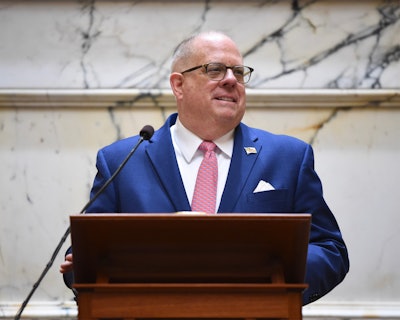To assist individuals impacted by the COVID-19 pandemic, Maryland’s Governor Larry Hogan announced $10 million in funding for 16 community colleges impacted by the deadly virus. The funds will support workforce development and certification programs.
The grants are part of the Governor’s Emergency Education Relief (GEER) Fund, which was developed as part of the Coronavirus Aid, Relief and Economic Security (CARES) Act to offer COVID-19 assistance to educational organizations, universities and community colleges.
 Governor Larry Hogan
Governor Larry HoganMore than $45 million in GEER funding has been set aside by Hogan for education initiatives. The CARES Act also provided $300 million for K-12 and postsecondary institutions.
“Thanks to our state’s world-class academic community, Maryland continues to be home to one of the most highly educated workforces in America,” said Hogan. “Now more than ever, it is critical that we offer all Marylanders every opportunity to get the tools they need to stay competitive in the job market, both during and after the COVID-19 pandemic.”
The funding can support salaries and wages, recruitment strategies, professional development training, certification and licensure programs, as well as other student resources at each of the state’s community colleges.
“We, as a community college sector, are very aware that the road to recovery and economic revitalization will flow right through our front door,” said Dr. Sandra L. Kurtinitis, president of the Community College of Baltimore County (CCBC).
CCBC received the highest amount of funding: $1,480,602. The community college, which has three main campuses and extension centers, serves more than 63,000 students each year, according to the school’s website.
“[Hogan] is someone who has a really well defined sense of how important his community colleges are,” said Kurtinitis. “And specifically, one as large as CCBC and one that does as much workforce training as we do.”
Behind CCBC was Montgomery College, with $1,361,801 in funding, followed by Prince Georges Community College, which received $1,344,689.
Other community colleges who received the grant include:
- Alleghany College
- Anne Arundel Community College
- Baltimore City Community College
- Carroll Community College
- Cecil Community College
- Chesapeake Community College
- College of Southern Maryland
- Frederick Community College
- Garrett College
- Hagerstown Community College
- Harford Community College
- Howard Community College
- Wor-Wic Community College
 Dr. Sandra L. Kurtinitis
Dr. Sandra L. KurtinitisAt CCBC, the grant will go toward developing short-term credentials. Individuals can choose from over 200 certification options in areas such as technology, health and human services, hospitality services, transportation, wellness and more. Credentials can be earned over the course of one to two years, according to Kurtinitis.
“We can actually make it possible for hundreds of people to come to the college and engage in a short-term pathway to a certification,” she said. “I mean, it is almost ‘you name it and we’ve got it here,’ which is a very gratifying position to be in. I’m sure it is one of the reasons why the governor really did feel that putting $1.4 million into our hands would be well invested.”
Another aspect of the funding will go toward the already-implemented tuition free initiative. The program, which was developed over the summer, earned $35 million through federal and state scholarships and COVID-19 funding.
Through the initiative, CCBC is looking for students to take a full course load, or 15 credits a semester. However, at least six credits are required. The program has helped more than 7,000 students receive their education tuition-free, according to Kurtinitis.
“If you have lost your job or you are in a family where the economic impact has been significant, then you need this,” she said. “It does not matter how old you are or how young you are. This is an opportunity for many people to simply come and get a good education at no cost to them so they can prepare themselves to reenter the workforce.”
To determine eligibility, potential students must fill out a Free Application for Federal Student Aid (FAFSA) form, CCBC admission application, CCBC’s tuition free application and send in their high school transcript or GED score.
Seeing the challenges of virtual learning for many of its students, CCBC made the decision to have 20% of instruction and student services in person for the fall semester.
CCBC has seen a 2.4% increase in fall semester enrollment, and budgeted enrollment projections were also up 5.5%. In terms of demographics, enrollment among African Americans, Latinx and female students also increased, according to school officials.
Comparably, community colleges across the country have experienced a 7.5% decline in enrollment, with 500,000 fewer students enrolled in community colleges this fall, the National Student Clearinghouse (NSC) Research Center reported.
Kurtinitis is “thrilled with the progress” and predicts the increase in enrollment numbers stems from implementing the tuition-free initiative.
“This is a college that professes and believes that everything we do here is workforce development,” said Kurtinitis. “Whether it’s preparing people for a degree to transfer to a university partner or preparing them to go into the workplace, either with a degree or with a short-term certification.”
Sarah Wood can be reached at [email protected].





















